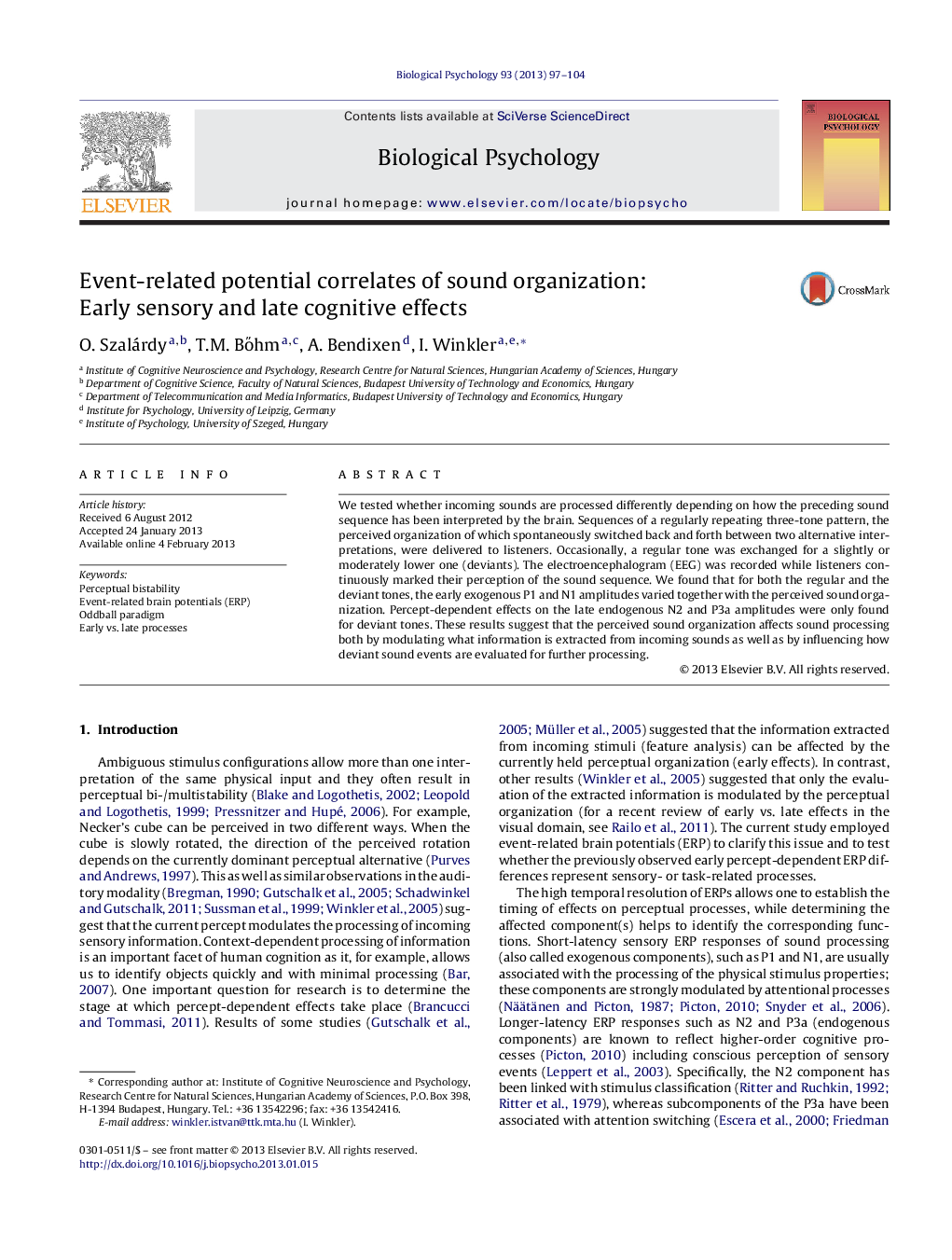| Article ID | Journal | Published Year | Pages | File Type |
|---|---|---|---|---|
| 920987 | Biological Psychology | 2013 | 8 Pages |
We tested whether incoming sounds are processed differently depending on how the preceding sound sequence has been interpreted by the brain. Sequences of a regularly repeating three-tone pattern, the perceived organization of which spontaneously switched back and forth between two alternative interpretations, were delivered to listeners. Occasionally, a regular tone was exchanged for a slightly or moderately lower one (deviants). The electroencephalogram (EEG) was recorded while listeners continuously marked their perception of the sound sequence. We found that for both the regular and the deviant tones, the early exogenous P1 and N1 amplitudes varied together with the perceived sound organization. Percept-dependent effects on the late endogenous N2 and P3a amplitudes were only found for deviant tones. These results suggest that the perceived sound organization affects sound processing both by modulating what information is extracted from incoming sounds as well as by influencing how deviant sound events are evaluated for further processing.
► The interpretation of a sound sequence influences how incoming sounds are processed. ► Perceived sound organization affects some early exogenous ERP components (P1, N1). ► Perceived sound organization affects the detection of auditory deviance. ► Perceived sound organization modulates the N2 and P3a components to irregular sounds.
